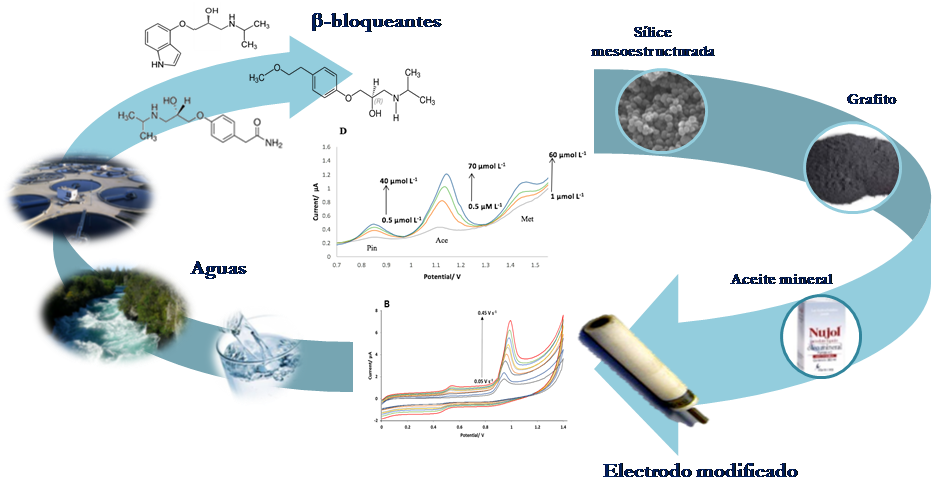Writing/Irene Vega
During the last year of the AVANSECAL-CM project, the URJC researchers participating in it have worked on the development of an electrochemical sensor, thanks to which it has been possible to analyze, for the first time simultaneously, three of the β drugs -Most frequently prescribed blockers worldwide (pindolol, acebutolol and metoprolol). These drugs are mainly used to treat various conditions, such as heart rhythm disorders or as cardioprotectors after a myocardial infarction.
Like other pharmaceuticals, these are also considered emerging contaminants and often appear very frequently in environmental waters, such as groundwater, rivers or lakes, and even in drinking water, since they are generally not completely eliminated in treatment plants. In this respect, the development of inexpensive, easy-to-use, highly sensitive and portable devices for performing in-situ measurements represents an additional advantage over the expensive conventional equipment used for this purpose in laboratories. “The sensor developed in our research group is prepared in a simple way, mixing graphite paste with mineral oil and amino-functionalized mesostructured silica, in suitable proportions. In the work, its high stability has been verified, for its use for long periods of time, since it is easily regenerated by means of a simple polishing operation” explains Dr. Isabel Sierra, responsible for this work.
Drugs in the rivers
In this work, recently published in the prestigious journal Sensors & Actuators B: Chemical, water for human consumption (bottled minerals and currents), rivers and sewage treatment plant effluents from different sources have been analyzed, finding the presence of these compounds in several samples. And it is that, according to Dr. Isabel Sierra, "the sensor developed "has a very good sensitivity, which, added to the ability to carry out a multi-residue analysis, represents an important advance aimed at controlling and reducing the presence of these drugs in the waters".
The study carried out is part of the AVANSECAL-CM project, in which the Laboratory of Electrochemistry and Separation Techniques (REDLABU) directed by Dr. Isabel Sierra participates, which includes among its objectives the development of advanced analytical strategies for the evaluation of the quality and safety of food and water, including regulated and emerging contaminants.




